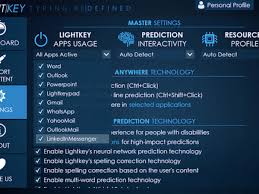

Once you have your lights grouped, the last part of your setup is working with your light beam directions. When you’re done grouping your fixtures click the “Next” button on the wizard. To group your lights you can simply select your lights while holding the shift key and then click the group icon on the top of the screen. One of the features of grouping fixtures that can be difficult is once you group a fixture that fixture can only be part of one group. Once you have laid out your preview the next step is grouping your fixtures. When you’re done designing your stage, click “Done” on the top wizard bar. When designing your preview just keep in mind that it doesn’t have to be perfect because the actual effects of the lights do not count on it. Inside of LightKey, you can use the basic copy and paste commands to help build out your preview. If you prefer, you can always take a picture of your stage and upload it to LightKey. To set your stage shape, LightKey has a sidebar on the left that allows you to select a shape and draw your stage.Īlso, in that sidebar, you can add different shapes, singers, drummers, trusses, etc that will really help bring the vision of your stage. To begin, you simply “drag and drop” your lights into position. It’s really up to you and what works best for your preferences. The most popular to work with is topdown but some prefer the front-facing preview. You can either set it up as a topdown or front-facing preview. When setting up your preview you will have two options. When building your preview you will have a wizard guide helping you through the steps when you first begin. Just as a heads up please note after you add your fixtures and move to the preview screen all of your lights that you patched in will turn on. Now that you have your output setup and your fixtures patched in LightKey the next step is setting up your preview. Now that you have added all of your fixtures just click “next” on the bottom of the screen.ĭon’t see your “generic brand” fixture? Use the Onyx Fixture Finder website to find alternate names that will work! Click here to go to my guide to using this great resource! Building Your Preview Once you do this you will have a popup box come up where you can set the start at, short name, count, and add multiples if you have the same type of fixture. Once you’ve located your fixture you can simply “drag and drop” your fixture into the selected universe. If your fixture happens to not be listed you can always import it into the fixture library. Since the library is huge I would recommend using the search feature. Most likely you will be able to locate any brand and type of fixture. One of the features I really like about LightKey is their fixture library.
#LIGHTKEY WITH REAPER PATCH#
Now, it’s time to patch in your fixtures inside of LightKey. The only downside to this option is you have to set up the output on both LightKey as well as your node or MIDI. The network-based outputs are becoming increasingly popular and much more common. The next option is going to be your network-based selections which include Art-Net, sACN, and ESP Net. One of those options is working with USB, the only downfall to this that you will have to leave the USB plugged in while working with LightKey and your lights. When setting up your DMX Output you will have a few options to select from. The next step in LightKey is going to be setting your network and hardware options. A screen will then pop up and you will be able to name your new show. Once you have downloaded LightKey you will be brought to a welcome screen to get you started.


 0 kommentar(er)
0 kommentar(er)
